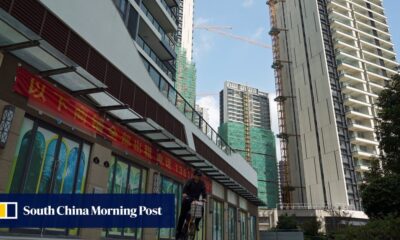Real Estate
Hong Kong records the most expensive high-end residential rental rates in the world
An annual study reported that despite having a 1 percent year-on-year drop in 2013, high-end residential rates in Hong Kong remain the most expensive in the world. According to the latest expatriate housing survey conducted by consultancy ECA International, a three-bedroom apartment located in Hong Kong’s prime areas, such as The Peak, Discovery Bay and Sha Tin, costs an average of USD11,440 per month, double the current rental rate in Singapore, which was ranked third in Asia and seventh worldwide. Singapore—named the world’s priciest city by a recent Economist Intelligence Unit study—registered an average monthly rate of USD5,630 for a three-bedroom condominium unit, ranking one spot higher than last year’s survey. Other Asian cities on the list include Tokyo and Shanghai at sixth and ninth places, respectively. Seoul sits outside the top ten at thirteenth place. Lee Quane, regional director for ECA Asia, told the South China Morning Post that the gap between the steep rents in the top two Asian cities is narrowing, while the high cost has had minimal effect on the cities’ market performance. Expats in Hong Kong are now most likely to lease apartments in less expensive areas like Tsim Sha Tsui, Quane told the publication. He also said that the 1 percent drop in Hong Kong rates “was in part a reaction to a series of government measures to cool the property market.” The latest ECA report also cited that the average monthly rental rate for an upscale, three-bedroom apartment in Asia is USD600 higher than the global average of USD3,000 per month. But although rental rates across Asia are among the most expensive in the world, they actually decreased by an average of 1 percent last year, compared with an estimated 2 percent average increase in most international markets. “While most locations in the region have seen rent increases in home currency terms, the pattern of increases is not as consistent when rents are converted into US dollars for comparison,” the report noted. Meanwhile, the city with the largest rental price change in the past year was recorded in Caracas, Venezuela, representing nearly a 50 percent increase, followed by Dubai, Sao Paulo, Nairobi, and Jakarta. HK Tsim Sha Tsui by WiNG was used under a Creative Commons licence.


An annual study reported that despite having a 1 percent year-on-year drop in 2013, high-end residential rates in Hong Kong remain the most expensive in the world.
According to the latest expatriate housing survey conducted by consultancy ECA International, a three-bedroom apartment located in Hong Kong’s prime areas, such as The Peak, Discovery Bay and Sha Tin, costs an average of USD11,440 per month, double the current rental rate in Singapore, which was ranked third in Asia and seventh worldwide.
Singapore—named the world’s priciest city by a recent Economist Intelligence Unit study—registered an average monthly rate of USD5,630 for a three-bedroom condominium unit, ranking one spot higher than last year’s survey. Other Asian cities on the list include Tokyo and Shanghai at sixth and ninth places, respectively. Seoul sits outside the top ten at thirteenth place.
Lee Quane, regional director for ECA Asia, told the South China Morning Post that the gap between the steep rents in the top two Asian cities is narrowing, while the high cost has had minimal effect on the cities’ market performance.
Expats in Hong Kong are now most likely to lease apartments in less expensive areas like Tsim Sha Tsui, Quane told the publication. He also said that the 1 percent drop in Hong Kong rates “was in part a reaction to a series of government measures to cool the property market.”
The latest ECA report also cited that the average monthly rental rate for an upscale, three-bedroom apartment in Asia is USD600 higher than the global average of USD3,000 per month. But although rental rates across Asia are among the most expensive in the world, they actually decreased by an average of 1 percent last year, compared with an estimated 2 percent average increase in most international markets.
“While most locations in the region have seen rent increases in home currency terms, the pattern of increases is not as consistent when rents are converted into US dollars for comparison,” the report noted.
Meanwhile, the city with the largest rental price change in the past year was recorded in Caracas, Venezuela, representing nearly a 50 percent increase, followed by Dubai, Sao Paulo, Nairobi, and Jakarta.

HK Tsim Sha Tsui by WiNG was used under a Creative Commons licence.
The rest is here:
Hong Kong records the most expensive high-end residential rental rates in the world
Real Estate
Miami – A Great Place to Buy Real Estate

Miami has evolved into a cosmopolitan wonder city under the sun. Famous for its great beaches, this city has also earned a reputation of being a sexy, marvelous and trendy place to live. From amazing golf courses like the one at Crandon Park in Key Biscayne to the Miami Metro Zoo, this beautiful city has something to offer to everyone. Owning a piece of paradise is a dream within reach of locals and foreigners as well. People from all parts of the world have already taken advantage of the great opportunities available today in the marketplace.
Miami has some of the most amazing real estate developments like the astonishing Santa Maria located in Brickell, or the unbelievable towers of Icon Brickell. Some other exclusive and impressive Miami condos include, the Jade at Brickell, the 900 Biscayne in downtown Miami, the fabulous Trump Palace in Sunny Isles Beach and the astonishing Icon South Beach just to name a few. These modern Miami luxury condos have all the comforts and amenities only found in five star hotels.
The city of Miami has it all, great golf, amazing beaches, a turquoise beautiful ocean, a warm weather, excellent shopping, an electrifying night life, lots concerts, entertainment and sports events at the famous America Airlines Arena in downtown Miami.
Miami real estate buyers are as diverse as the city culture and population itself. Buyers come from all over the globe, Europeans, Latin Americans, and Asians and of course buyers from all around the United States. Some have chosen this beautiful city to have a second home and some have fallen in love so much that they now call Miami their home making it an exciting melting pot to live in.
Real Estate
Real Estate Investor's Secret Weapon

Real Estate Investors have a unique tool in their arsenal that other types of investors do not. One of the oldest tax code sections is 1031. This secret weapon is called a 1031 exchange. It is one of the few areas of the tax code where the US Government allows taxpayers to sell an asset and not immediately pay the taxes. Even State taxes are deferred. The way a 1031 Exchange works is simple. If you sell piece (s) of investment property, and you are want to buy of another piece (s) of investment real estate of equal value, you can defer indefinitely all taxes (capital gains (15%), recapture tax (25% ) and state income tax). This is the benefit: by not having to pay those taxes, you can keep your money (instead of giving it to Uncle Sam) and smartly reinvest it for yourself to grow your real estate portfolio. 1031 is a free financial tool that let you keep 15-30% of taxes you would have had to pay. In the world of increasing taxes, 1031 is a viable alternative.
There are some guidelines that need to be followed, and I will break them down. First, what is investment real estate? Investment real estate is defined as property used in a trade or business. It could be used to run your office or it could be rental property. One of the nice flexible features of 1031 is that all real estate is exchangeable. This means that a home can be exchanged for a condo or a piece of land can be exchanged for a commercial property. I use the rule of thumb that any property with a deed can be exchanged for another property with a deed. The other nice feature is that you can sell one property and purchase more than one replacement property or vice versa.
There are three main rules that investors need to know about 1031 exchanges. First of all, you must use a Qualified Intermediary (an Independent Middleman) to help facilitate your 1031 exchange. The QI, as they are called will do many things including prepare the Exchange Agreement, Escrow your 1031 proceeds, and most importantly make the exchange go smoothly. The QI must be hired prior to the closing of the relinquished property. Secondly, the Exchangor (the person doing the exchange) has 45 days from the closing date of the relinquished property to identify the replacement property. Identification means to list (not go under contract) up to 3 properties of any value and send them to the QI. Finally, the Exchangor has 180 days (from the date closing on the relinquished property), to close on one of those three identified replacement properties.
I don't want to over simplify 1031. Please consult your tax advisor in addition to your Qualified Intermediary to analyze your exchange and to be sure you are making the best tax decision. I do believe the rule of thumb should be if you want to keep your money invested in real estate, then 1031 is a tool you must consider.
1031 can be a potent weapon for the smart real estate investor. There is nothing worse than having a client not consider 1031 or not have their real estate professional tell them about it and the relinquished real estate closes and the client changes their mind. After the relinquished property closes, it is too late to do an exchange. 1031 is an efficient tool for an investor to build their portfolio. Plan your transactions and watch your real estate fortune grow.
Dave Owens, CPA, CES is the managing Member of Entrust 1031 Exchange. Dave and his staff have successfully performed over 10,000 exchanges since 1997. Entrust has an arsenal of tax free strategies. Feel free to contact Dave for more information or questions at 239-333-1031 or owens66@entrustfreedom.com .
Source by Dave Owens
Real Estate
How to Become a Successful Real Estate Developer

Real estate investment and development has never been a more popular pastime or career changing challenge; if you would like to learn seven secrets for consistently successful real estate investing through development or you would like to know how you can continue to profit from property even if the market takes a downward turn just read on …
1) Do Your Location Homework – did you know that through successful and sustained location research professional property investors actually continue to profit during a market down turn? It's true – whatever the market conditions you can apply their location research approach to your real estate investments and also make consistent profits from property.
Take the necessary time to learn all about a town or city you're considering for your next property development purchase and discover where the up and coming areas of that town are likely to be. If there are inner-city redevelopment projects planned examine the real estate market in the immediate vicinity, if there are areas that are booming right now examine the immediate neighboring areas for their potential for future prices arises for example.
Do not follow the crowd – have the confidence to buck the trend and get ahead of the curve by positioning yourself in a market that is about to boom rather than one in that has already blossomed.
2) Know What You Can Afford – While it can pay to sometimes speculate never be tempted to jeopardize your own home. Work out your finances and be ruthlessly strict about what you can and can not afford as a down payment, for mortgage costs and for the renovation and redevelopment of your next real estate investment. Only proceed within the confines of your tightly allocated budget and do not be tempted to over extend yourself specifically if competition in the property market is tough and the market is slow or stagnant.
3) Identify Your Target Market – Having identified your next location for property investment identify the types of people who buy into renovated assets in that location. Know who your target market are going to be and what they are likely to look for in a property in that location. If for example you're examining inner-city spaces you might identify that your buyers will be young single professionals and that the ideal property type for these people will be luxury low maintenance apartments – seek out suitable properties with the potential for redevelopment into luxury low maintenance apartments and you will fulfill your target market's brief … seek out large homes with substantive gardens in the area and you will have totally missed the market and potentially created a property that will not sell!
4) Renovation Not Rebuild – Know your budget limits and your personal skill restrictions. Do not consider taking on a property that is in need of a complete structural overhaul when your budget is tight or you do not personally have the time, skills or inclining to do the structural work yourself. Be realistic about what you and your budget can achieve and seek properties that fulfil that brief. Pay to have an independent and complete survey done on any property you are seriously considering buying before making a down payment to ensure that there are no hidden surprises waiting for you benefit the floorboards to eat up your budget in its entity.
5) Manage Your Budget – With your survey in hand you can approach builders for statements and seek out prices for fixtures, fittings, finishes and furnishings. Take the prices quoted and sourced and build your budget. Factor in overwriting mortgage and service costs and labor costs as well as your findings and structure and allocate your money accordingly. Watch every single spend and be ruthlessly strict with yourself and your builder. If at all possible have your builder commit to a contract with fixed finish dates and fees and stay on top of every single penny or cent every single day. At the end of each week tally up your outgoings and expenditure and ensure you're not exceeding your budget. If you're overspending rein it in or you will have to shave it off other areas of the development. Remember never to scrimp and save on finishing touches and always give yourself a realistic fall back fund in case of emergencies.
6) Appeal To The Widest Market – Forget putting your personal stamp on any property you develop – you are not going to be living in the property! You should already have identified your target market which will give you a good idea of the level and quality of finish expected, now meet those expectations without adding your own personal taste into the equation. By appealing to the widest market or the lowest common denominator your property will be attractive to the majority of buyers making it faster and easier to sell on and profit from.
7) Make Friends With A Real Estate Agent – Your greatest ally when developing property will be your real estate agent. Make friends with these guys and you will build a beautiful and successful symbiotic relationship in which you both profit to the maximum! Real estate agents are a fountain of untapped knowledge about the local market, who is looking for what property in which area, which additional features cost little to add but which push up the asking price and what a buyer expects from your particular property type. Get the facts from your real estate agent and then apply their advice. You will create a property they can market for top dollar and to the widest market – you will make more profit and they will make a larger commission including a beautiful and lasting friendship!
Finally, remember that when you've bought, renovated and sold on you'll be looking for that next property opportunity and any real estate agent who you've worked with well will be on the hunt for suitable real estate for your next investment making any identical purchases that much easier to source.












